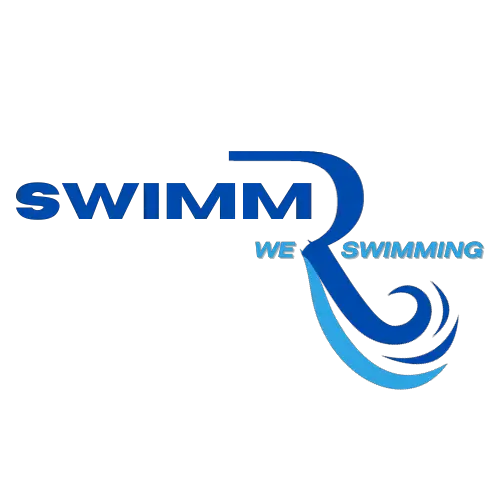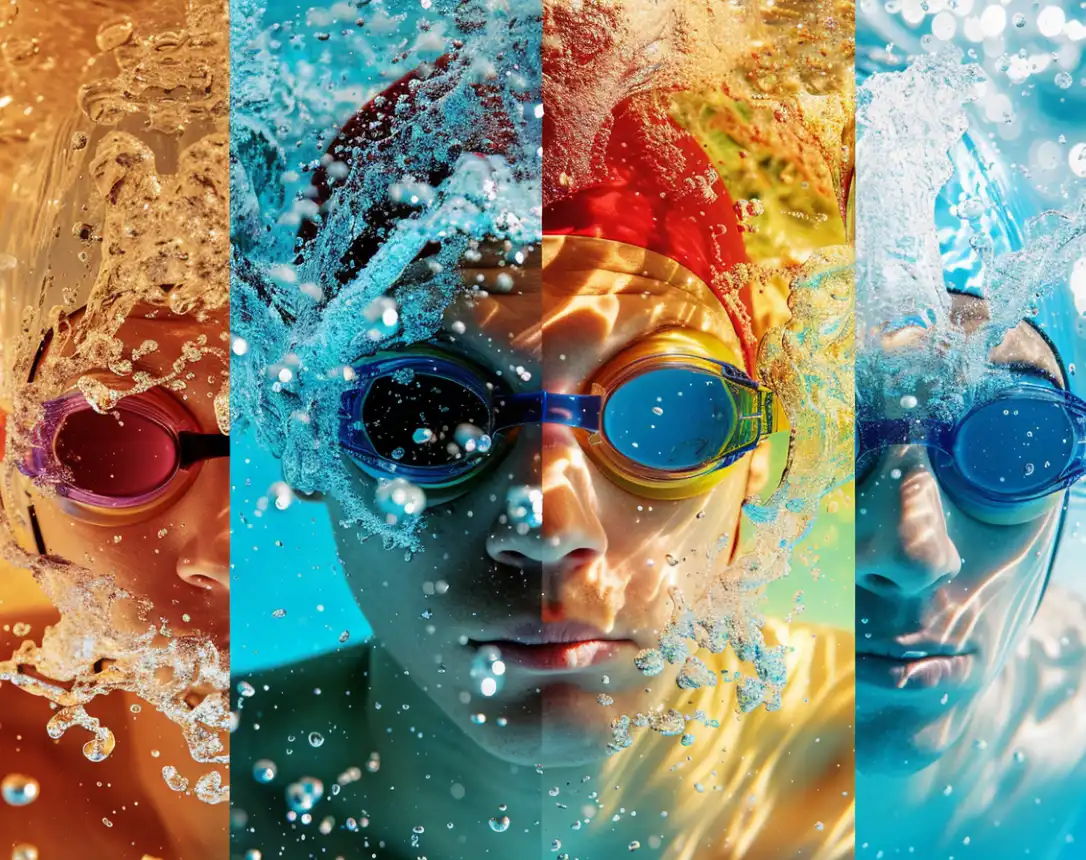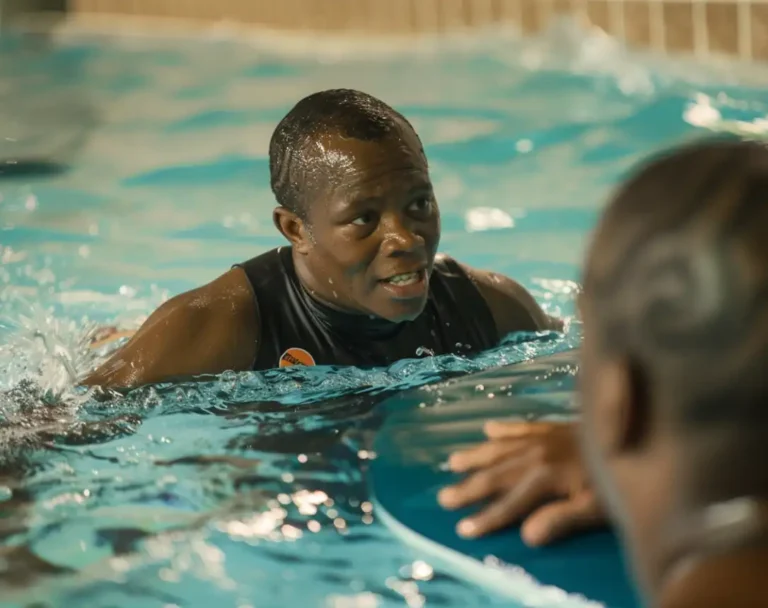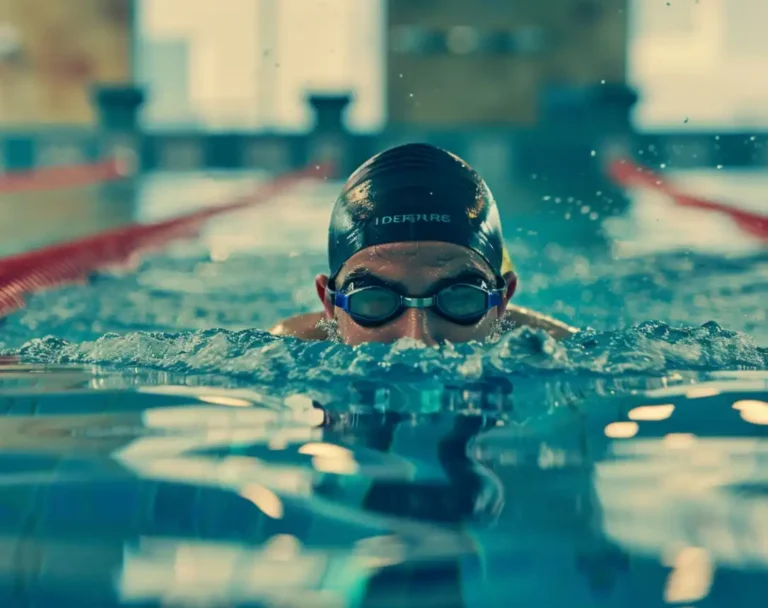Exploring different swimming strokes opens a world of aquatic diversity, offering various benefits and challenges to swimmers of all levels. Each stroke – from the power-driven freestyle to the rhythmic breaststroke, the balanced backstroke, and the efficient butterfly – has its unique technique and appeal.
This guide invites you to dive into the nuances of each, understanding how they contribute to a well-rounded swimming regimen. Whether for competition, fitness, or leisure, mastering multiple strokes enhances your water adaptability and enjoyment.
Overview of Swimming Strokes
Imagine gliding through water with grace, your arms slicing through the surface, your legs powering you forward. That’s the joy of swimming. As I delve into the world of swimming strokes, it’s thrilling to see how each style offers a unique blend of rhythm, strength, and technique to conquer the water. Swimming isn’t just a skill, it’s an art form, and the strokes are its expressions.
In the freestyle stroke, speed is king. With alternate arm movements and a flutter kick, I propel myself swiftly. The freestyle is often the first stroke learned and a foundation for aquatic prowess.
- Freestyle stroke (Front Crawl): Alternate arm movements; flutter kick.
The grace of the backstroke contrasts the freestyle, as I lie on my back, arms rotating in a windmill motion. This stroke also relies on a flutter kick, but offers a chance for a breather with my face up.
- Backstroke: Windmill arm motion; flutter kick; face up.
The breaststroke is a dance, a symphony of simultaneous arm movements and a frog-like kick. It’s about timing and coordination, a testament to my body’s harmony.
- Breaststroke: Simultaneous arm movement; frog kick.
The butterfly stroke is the crescendo. With a dolphin kick and simultaneous arm sweep, it’s a powerful spectacle of aquatic finesse.
- Butterfly stroke: Simultaneous arm sweep; dolphin kick.
Each swimming stroke offers a unique challenge, from the rhythmic breaststroke to the dynamic butterfly. I relish the chance to master these movements, to feel their rhythm, and to embrace the water in all its forms.
Freestyle: The Front Crawl Technique
Diving into the exhilarating world of swimming, I find freestyle’s front crawl technique combines speed and efficiency like no other stroke. It’s a symphony of movement, where every limb plays a crucial role in propelling me through the water. Let’s break down this fascinating stroke.
Basics of Freestyle
In freestyle, the body slices through the water horizontally, alternating arms in a windmill motion. It’s about consistent propulsion and keeping the body flat to minimize drag. For me, mastering freestyle involves understanding its mechanics and ensuring every motion is purposeful.
Arm Movement and Pull
As my hand enters the water, I keep my elbow higher than my hand, executing a powerful pull beneath the surface. Following a path shaped like an ‘S’, I maximize my propulsion. During the recovery phase, it’s my aim to keep my arm relaxed to prepare for the next powerful pull.
The Flutter Kick
The flutter kick plays a crucial role in my freestyle technique, driving me through the water with speed. Kicking from the hips with straight, yet slightly bent knees, produces a quick and efficient kick. The constant alternating rhythm helps maintain my body position and adds to the stroke’s propulsion.
Breathing in Freestyle
Timing is everything when it comes to breathing in freestyle. I turn my head to the side just enough to inhale, while one arm pulls underwater. It’s a quick breath that shouldn’t disrupt my speed or rhythm. I exhale steadily underwater, readying for the next breath, ensuring that oxygen goes hand in hand with my strokes.
Backstroke: Horizontal and Streamlined
Diving into the backstroke, it’s thrilling to master the dance of the arms and the flutter kick while maintaining a horizontal, streamlined position. It’s about the precision of each stroke, the rhythm of my breathing, and the coordination that makes me glide through the water with grace.
Basics of Backstroke
Backstroke demands a balance between relaxation and power. My back acts as a keel, keeping me horizontal, which is essential for speed and efficiency. I ensure my body is as flat as possible, minimizing drag and creating a more streamlined shape.
Arm Technique in Backstroke
- Entry: My hand slices into the water, pinky first, directly above my shoulder.
- Pull: I bend my elbow, pulling down until my hand is level with my trunk.
- Push: Extending my arm pushes the water down and launches me forward.
- Recovery: With a relaxed arm, I bring it out of the water, elbow slightly bent, returning to the entry position.
This cycle is continuous, each arm rotating opposite the other, maintaining a consistent pace.
The Kick
In backstroke, the flutter kick is vital for stability and propulsion:
- I keep my legs straight but not rigid.
- My toes are pointed, creating an extension of my body line.
- Alternating kicks come from the hips, quick and compact.
- The motion is constant, supporting my body’s rotation, and contributing to forward momentum.
Breathing and Coordination
- Breathing: I time my breaths with the movement of my arms, inhaling with one arm’s recovery and exhaling with the other’s.
- Coordination: Each arm pull is in harmony with the opposite leg’s kick, establishing an efficient rhythm that carries me swiftly through the water.
Combining these elements, I am the epitome of backstroke skillfulness — a picture of horizontal, streamlined motion.
Breaststroke: Rhythm and Efficiency
As I glide through the water, the breaststroke becomes a dance of precision. My arms and legs move in harmony, fueled by precise breathing and impeccable timing. This is not just a stroke; it’s an art form combining rhythm with efficiency. Let’s break it down.
Fundamentals of Breaststroke
When it comes to breaststroke, each move I make is vital. The key is maintaining a streamline position to minimize resistance. As I initiate the stroke, my body is extended, hands together, cutting through the water. I remember it’s not just about speed, but how effectively I can maintain the flow.
The Arm Stroke and Leg Movement
With each arm stroke, my hands sweep outwards in a heart-shaped pattern. It’s here that propulsion is born, driving me forward. The leg movement follows with a precise frog kick—heels drawn towards my hips and then thrust outwards and around in a circular motion—contributing to the seamless rhythm that defines the breaststroke.
- Arm movement: Sweep out, in, and extend
- Leg movement: Heel up, kick out, and snap together
Breaststroke Breathing Technique
Breathing is not an afterthought; it’s a critical component of my stroke. I take breaths with every arm cycle, timing my inhales as I lift my head just above the waterline. The trick lies in coordinating this with my arm strokes and kick to avoid disrupting my streamline flow.
- Breathing cycle: Inhale with arm stroke, exhale underwater
Timing and Coordination
Timing isn’t just essential; it’s everything. I synchronize my arm strokes with my frog kick and breathing to create a continuous, fluid movement. It’s not about isolated parts working independently, but a symphony of movements. The result—a powerful yet graceful stroke that feels like flying underwater.
- Coordination: Sync arms, legs, and breath
- Timing: Glide after each kick before the next stroke
Butterfly: Dynamic and Challenging
The butterfly stroke captivates with its power and grace; it’s a testament to a swimmer’s skill and physical prowess. Mastering this stroke takes my dedication to new heights—it’s truly the fusion of strength and spectacular timing.
Basics of Butterfly Stroke
The butterfly stroke is a symmetrical marvel, requiring simultaneous overhead arm movement. With both arms moving in unison, I ensure that my palms are pushing through the water just below the surface, gaining maximum propulsion. Here’s how I position my arms:
- Entry: Hands enter the water about shoulder-width apart.
- Pull: I pull down in a circular motion, directing my palms out to my sides to establish a powerful grip on the water.
The Dolphin Kick
Critical to the butterfly’s fluidity is the dolphin kick. This is where my technique combines with raw strength to make the stroke efficient and effective. The kick has two key phases:
- Downbeat: Kicking starts from my hips, propelling me forward as I press down with my feet.
- Upbeat: The less forceful return phase that helps maintain motion and prepares me for the next kick.
Timed right, the dolphin kick elevates my body, ensuring less drag and better speed.
Arm Pulls and Recovery
Smooth arm pulls are crucial to keeping the butterfly stroke dynamic. After I press water down and outwards, my arms sweep up to the surface for recovery. The movement is fluid, yet crisp:
- Arms extended forward, thumbs first.
- A bow-shaped pathway allowing for minimal drag and maximum efficiency.
Breath Control and Timing
I synchronize my breathing with the undulating movements. It’s vital to get air without disrupting the flow, so I lift my head briefly at the apex of the arm movement. Here’s how I master my breath control:
- I inhale quickly during the arm recovery phase.
- Exhale underwater as I prepare for the next stroke.
Timing plays a starring role—inhale too late or early, and it throws my entire rhythm off. Through practice, I’ve found the harmony between breath and movement, making the butterfly both dynamic and challenging.
Specialty Strokes for Skill Variety
As a swimming enthusiast, I’ve always been thrilled by the variety that different strokes offer. I find it incredibly exciting to add specialty strokes to my routine, which not only challenge my strength and rhythm but also enhance my balance in the water.
The Elementary Backstroke
The Elementary Backstroke is the epitome of relaxation in swimming, yet it significantly improves my glide and rhythm. This stroke is characterized by its ‘chicken-airplane-soldier’ arm movements, paired with a simple flutter kick. It’s a fantastic stroke for beginners, as it helps to build confidence in the water with its simplicity and ease.
- Emphasis on Balance: Helps me maintain a stable position.
- Glide and Scissor Kick: Perfect for a gentle, yet effective workout.
Sidestroke
When I practice the Sidestroke, it feels like I’m performing a covert aquatic dance. Its unique one-sided stroke and scissor kick combination make it perfect for saving energy or for lifesaving purposes.
- Scissor Kick Mastery: Requires rhythm and coordination.
- Strength and Endurance: Builds my side muscles and overall endurance.
The Trudgen
I love the power and challenge the Trudgen stroke offers. It’s a blend of front crawl and sidestroke, featuring alternating arm action with a flutter kick, demanding both strength and rhythm.
- Powerful Rhythm: It’s all about timing and powerful arm strokes.
- Enhanced Strength and Balance: Offers a vigorous workout and improves my aquatic poise.
Swimming Techniques and Tips
I’m about to share some essential swimming techniques and tips that will change the way you hit the water. Listen, understanding the mechanics of swimming is more than just staying afloat; it’s about slicing through water like a hot knife through butter. With these tactics up your sleeve, you’ll be cruising through laps with finesse. Let’s dive right into streamlining, breathing, and kicking – the cornerstones of a swimmer’s skill set.
Streamlining Body Position
Achieving a streamlined body position is crucial in swimming. Here’s the lowdown:
- Keep your body flat: Aim for a horizontal pose from head to toe
- Align your head: Tuck your head between your arms; eyes down
- Reduce drag: Extend your arms fully, one hand over the other
By maintaining a sleek line, you minimize resistance and enhance your glide and efficiency in the water.
Breathing Techniques
Now, let’s talk about breathing techniques:
- Rhythmic Breathing: Coordinate your inhales and exhales with your strokes. Breathe in through your mouth when turning your head to the side, and exhale through your nose when your face is in the water.
- Side Breathing: Focus on turning your head sideways just enough to catch a breath without lifting your head too much, which can disrupt your streamline.
Mastering breathing is a game-changer. It conserves energy and keeps oxygen flowing to your muscles.
Kick Efficiency
Finally, the kicks – the engine to your aquatic vehicle:
- Flutter Kick: Quick, small kicks from the hips, keeping legs straight and toes pointed
- Dolphin Kick: Both legs move together with a whip-like motion, originating from the hips
- Frog Kick: In a breaststroke, your legs bend, then snap back together through a circular motion
A mix of flutter, dolphin, and frog kicks propels you forward efficiently, each suited for different strokes but all essential for speed and power in the water. Get these kicking techniques right, and watch your swimming transform!
Swimming Workouts and Drills
The rush I feel gliding through the water is unmatched, and enhancing this experience comes down to fine-tuning my workouts and drills. Here’s how I elevate my swimming routine by focusing on intensity, speed, and flawless technique.
Intensity and Endurance Training
To supercharge my endurance, I incorporate sets that alternate between moderate and high intensity. Here’s a sample routine I follow:
- Warm-up: 200 meters, easy pace
- Main set: Repeat 4x
- 100 meters at moderate pace
- 50 meters sprint
- 50 meters easy
- Cool down: 200 meters, easy pace
This mix keeps my heart rate up and builds full-body strength, vital for prolonged swimming sessions.
Speed and Sprint Drills
When I’m all about speed, I shave off those precious seconds with focused sprints. Check out my favorite sprint drill:
- 4 x 50 meters: Maximum effort on odd laps, easy on even laps
- Rest: 30 seconds between each set
My confidence soars as I see my propulsion increase and my times drop, telling me these drills deliver results.
Technique and Coordination Drills
My swim isn’t just about power; it’s about finesse too. I practice drills that enhance my coordination and refine my stroke. I like this sequence:
- Single-arm freestyle: 4 x 50 meters each arm, focusing on reach and pull.
- Catch-up drill: 4 x 50 meters, one hand meeting the other in front before the next stroke.
These exercises improve my stroke efficiency, making every movement in the water count.
Swimming for Different Skill Levels
When I first dipped my toes in the water, I was clueless about the depth of swimming’s world. Now, as a seasoned swimmer, I know how crucial it is to match your skill level with the appropriate techniques and workouts. Let me help you navigate through the waves, from beginner to advanced!
Beginner Swimmers
For those of you just starting out, it’s all about building confidence and nailing the basics. In swimming lessons, instructors often emphasize mastering breathing and basic strokes like the front crawl or breaststroke.
Techniques to Focus On:
- Breaststroke: Start with a glide and adopt a frog-like kick.
- Front Crawl: A relaxed, alternating arm motion paired with steady breathing.
Drills:
- Kickboard Drills: Enhances leg strength and kick technique.
- Bubble Blowing: Improves breath control.
Intermediate Techniques
Once the fundamentals are under your belt, prepare for a challenge. Intermediate swimmers should focus on refining technique and increasing endurance.
Key Focus Areas:
- Efficiency: Perfecting stroke techniques.
- Speed: Incorporating interval training with timed sprints.
Workout Routine:
- Mix of Strokes: Includes butterfly and backstroke to build overall strength.
Advanced Swimming Workouts
Advanced swimmers can push their limits with intense drills and workouts that further strength and endurance. Mixing up the routine avoids plateaus and keeps workouts engaging.
Training Elements:
- High-Intensity Interval Training (HIIT): Spikes heart rate and increases stamina.
- Distance Swims: Builds endurance and perseverance.
Advanced Drills:
- Underwater Kicks: Maximizes lung capacity and enhances propulsion.
- Pace Clock Use: Develops speed consistency.
Swimming is a journey that begins with a single stroke. Whether I’m gliding through beginner techniques or powering through advanced workouts, every lap helps carve my path through the aquatic challenge!
Practical Applications of Swimming Strokes
I’ve always marveled at how swimming strokes, each with their unique rhythm and mechanics, serve different yet compelling purposes. From the adrenaline-pumping world of competitive swimming to the critical lifesaving techniques and the mastery needed in open-water swimming, the right stroke maximizes efficiency and can even save a life.
Competitive Swimming
In the thrilling realm of competitive swimming, athletes strive for peak efficiency and speed. The freestyle stroke dominates for its rapid pace, but the backstroke, breaststroke, and butterfly are also key for varying distances and events. Competitive swimmers train rigorously to perfect their technique, targeting improvements in every aspect, from breath control to flip turns. Their fitness level must align with the demands of swift, unyielding races where even a millisecond counts.
- Preferred Strokes: Freestyle, Backstroke, Breaststroke, Butterfly
- Key Focus: Speed, Technique, Endurance
Lifesaving and Rescue Strokes
For lifesaving endeavors, swimming strokes must ensure both the rescuer’s and victim’s safety. Lifesaving demands strokes like the sidestroke and elementary backstroke, which allow for a smooth approach and the ability to tow. Lifeguards and rescue personnel often rely on these techniques due to their efficiency in conserving energy for prolonged efforts.
- Critical Strokes: Sidestroke, Elementary Backstroke
- Swimmer’s Goal: Energy Conservation, Safe Victim Towing
Open-Water Techniques
Open-water swimming adds a layer of complexity with unpredictable conditions. Open-water and recreational swimmers favor the freestyle for its sustained speed and navigation ease, while the breaststroke offers a valuable method for head-above-water sightseeing. This style of swimming challenges one’s ability to adapt and persevere against changing currents and weather.
- Preferred Strokes: Freestyle, Breaststroke
- Skills honed: Adaptability, Stamina
Swimming is more than a sport or leisure activity; it’s a skill set that adapts to varying demands, whether I’m targeting a gold medal, saving a life, or conquering the unpredictability of the sea. Each stroke I learn and refine bolsters my swimming style repertoire, making me ready for the water, wherever it may be.
Health and Fitness Benefits of Swimming
I’ve always believed in the transformative power of swimming, not just as a recreational activity but as a cornerstone for health and fitness. Diving into the pool has countless perks for the body, and I’m thrilled to shed light on exactly how it enhances our well-being.
Cardiovascular and Muscle Strength
Swimming is a stellar cardiovascular workout that significantly boosts heart health. By propelling ourselves through the water, we engage the heart and lungs, strengthening our cardiovascular system. A typical swim session can amplify heart rate and improve blood flow, which in turn nourishes our muscles with oxygen.
- Heart: Improved strength and efficiency
- Lungs: Enhanced capacity and stamina
Additionally, it’s a top-tier exercise for building muscle strength. From the glutes to the upper back, each stroke I take activates a wide range of muscles:
- Abs and Core: Promotes stability and power
- Biceps and Glutes: Increases tone and strength
Fitness Level and Full-Body Workout
Swimming has the exceptional ability to elevate my fitness level across the board. One of the key advantages is that it offers a full-body workout. With each kick and arm pull, multiple muscle groups are targeted simultaneously, leading to a comprehensive fitness regimen.
- Calorie Burn: An efficient way to manage weight
- Endurance: Progressively builds stamina with regular practice
The activity recruits my abs, biceps, and core among others, contributing to a well-toned physique. The inclusive nature of the workout means every part of my body stays engaged and active.
Flexibility and Rehabilitation
Lastly, the supportive nature of water makes swimming an ideal choice for enhancing flexibility and aiding in rehabilitation. The buoyancy reduces strain on my joints and allows a greater range of motion, which is essential for recovering from injuries or managing chronic conditions.
- Rehabilitation: Lowers risk of further injury
- Flexibility: Encourages greater muscle stretching without harsh impact
Overall, each dip into the pool is a refreshing journey toward optimal health, and I can’t wait for my next swim to keep building on these benefits.
Improving Your Swimming Strokes
Elevate your aquatic prowess by mastering advanced techniques, utilizing swimming aids, and dedicating time to consistent practice. I’m thrilled to share insights that will fine-tune your strokes for peak performance.
Advanced Techniques
To enhance your swimming strokes, a keen focus on technique is crucial. Perfecting the glide phase ensures a streamlined position in the water, minimizing resistance. To improve, concentrate on a smooth outsweep and insweep during each arm cycle. An undulating movement is key, especially in butterfly and breaststroke, where a rhythmic flow boosts efficiency. Keep your toes pointed to improve your kick and ensure your head remains in a neutral position to reduce drag.
Incorporating Swimming Aids
Using swimming aids can pinpoint areas for improvement. A kickboard encourages a strong and consistent whip kick, essential for strokes like breaststroke. It also aids in maintaining a streamlined position by focusing on your lower body. Don’t underestimate the power of resistance tools like fins; they can help reinforce proper technique and build strength.
Consistency and Practice
To see genuine progress, there’s no substitute for consistency and practice. Challenges may be strenuous, but repeat drills targeting specific arm movements to build muscle memory. Dedicate sessions to individual stroke components—practicing the outsweep and insweep separately before combining them. Remember, improvement comes from frequent, dedicated practice, not occasional laps in the pool.
Understanding the Mechanics of Swimming
Swimming fascinates me every time with the seamless blend of power and grace swimmers display. The way swimmers slice through the water has always intrigued me because it’s not just about swimming, it’s about mastering the water around you. Let’s unravel how this mastery is achieved through the science behind the movements, and explore the intricacies of propulsion, hydrodynamics, and buoyancy in swimming.
The Science of Propulsion
When I curl my hands into a cup and forcefully pull the water back, this act of propulsion is fundamental to moving forward. My muscles work in a coordinated effort to create this motion. For instance, in freestyle, my hand acts as a paddle, entering the water with my elbow higher than my hand, then pushing against the water’s resistance until it exits past my hip, thus propelling me forward. Efficiency in each stroke is critical; wasted movements are like throwing energy into the deep end.
Hydrodynamics and Efficiency
Hydrodynamics is a game-changer in how I move through the water. The more streamlined my body position, the less resistance I face. This efficiency comes from aligning my head and spine, keeping my body as horizontal as possible, and reducing drag. Here, technique matters. Picture this: my arms are arrows cutting the water, my body follows in a narrow path, and my feet are the last to pass, minimizing resistance.
Breathing and Buoyancy
Learning the rhythm of breathing while maintaining buoyancy is like finding the perfect beat in music; you sync with it and it fuels your swim. I take a breath on one side while alternating arm strokes, always keeping my body balanced and my head aligned with my spine, which ensures I don’t sink or drag. My lungs are like floatation devices; when I inhale, my chest rises, improving my buoyancy and helping to keep me afloat. It’s this delicate balance that can make or break a swimmer’s pace.
Each stroke, each breath, and the fluid body movement in swimming isn’t just about getting from one end to the other; it’s about doing so with precision, power, and a bit of aquatic finesse.
FAQ – Frequently Asked Questions
Which swimming stroke is best for beginners?
Freestyle is generally recommended for its simplicity and efficiency.
How can learning different strokes benefit my swimming?
It improves overall fitness, technique, and prevents overuse injuries by varying movements.
Can mastering multiple strokes improve my swimming speed?
Yes, understanding the strengths and applications of each stroke can significantly enhance your speed and efficiency in the water.
Thank you for joining us to explore the variety and benefits of different swimming strokes. Share your progress or favorite stroke in the comments or on social media!






